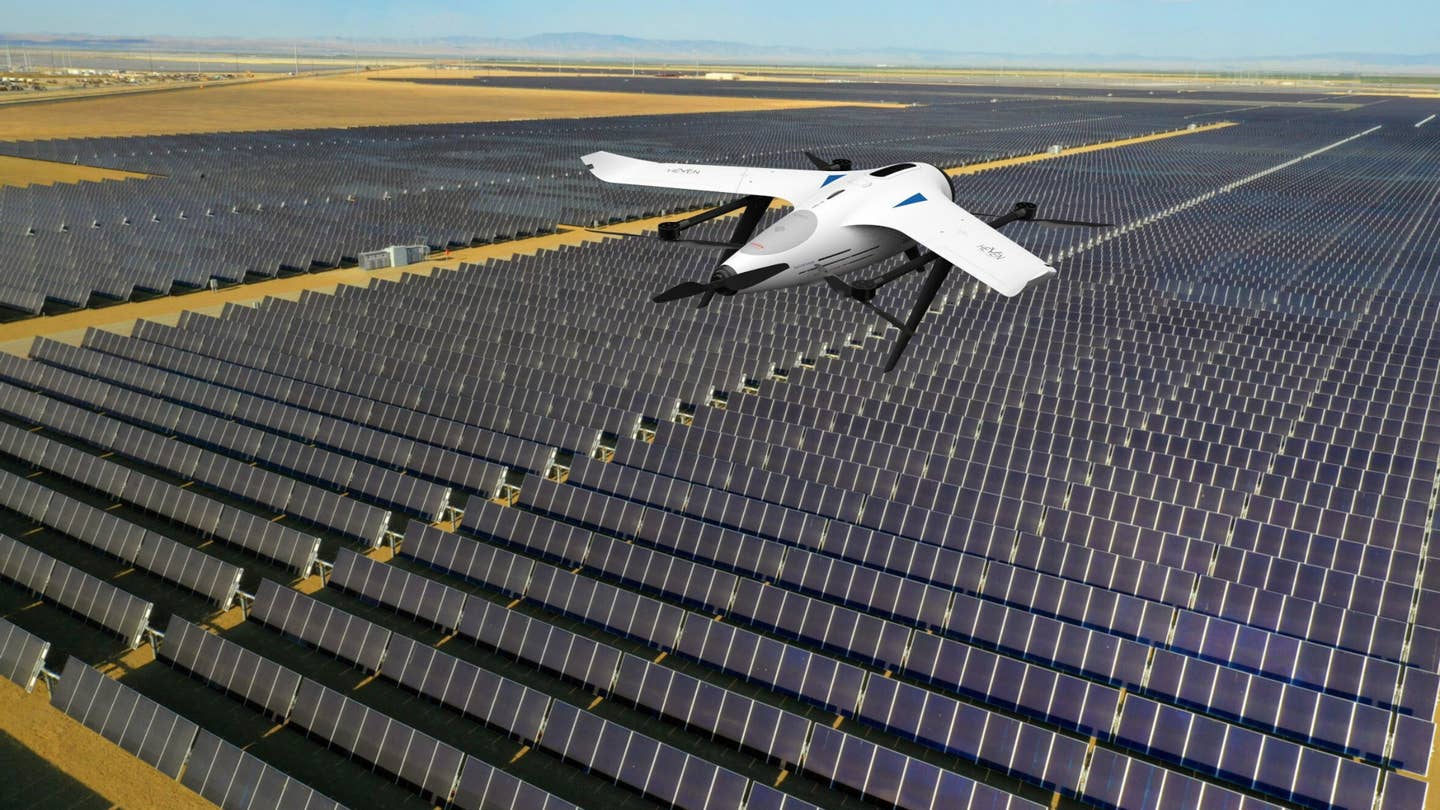HevenDrones Unveils 2 Hydrogen-Powered Drones
The company’s new H2D200 and H2D250 models run on hydrogen fuel cells and are designed for everything from last-mile delivery to military resupply.

HevenDrones’ H2D200 series drone takes flight. [Courtesy: HevenDrones]
By and large, developers of hydrogen propulsion for aviation are starting by integrating their systems on light GA airplanes. Some are looking at an even smaller aircraft.
At the Monaco Hydrogen Forum on Monday, Israeli manufacturer HevenDrones unveiled two new hydrogen-powered drones designed for everything from defense to last-mile delivery. The company introduced the H2D200 series, which comprises two models: the H2D200 and H2D250.
Hydrogen fuel cells offer a greater range than lithium-ion batteries—which are present in many commercial drones—due to their light weight and high energy density. They also do not need to be frequently replaced, which keeps the small, buzzing aircraft in the sky longer and can lower long-term costs.
“We are at a pivotal moment in the drone industry,” said Bentzion Levinson, CEO of HevenDrones. “The H2D200 series represents not only a leap forward in drone technology but also a testament to our commitment to building a smarter ecosystem in the skies using the full power and potential of AI. With these hydrogen-powered drones, we are redefining the possibilities of what drones can achieve, while leveraging a clean and readily available fuel source.”
The smaller of the two new models, the H2D200, is built to carry payloads up to 10 pounds. HevenDrones says the drone’s range of about 275 nm and flight time of up to four hours set a “new standard for smaller payload drones.” It cruises on fixed wings at around 63 mph (55 knots) but is also capable of precision hovering.
The larger H2D250 offers the same cruise speed and hover capability, but it can carry up to 22 pounds. Its 466 sm (405 nm) range and operational time of up to eight hours make it ideal for “advanced logistics missions,” the company said—specifically those requiring multiple deliveries.
Both designs build on Heven’s hybrid-electric H100, which the company said now boasts superior lift capabilities. But they instead rely on hydrogen fuel cell technology developed in partnership with Plug Power. The two firms began collaborating in 2021, with plans to develop a hydrogen ecosystem comprising supply, infrastructure, fueling, and refueling for drone operations.
The technology incorporates Plug Power’s ProGen-based hydrogen fuel cell stack, which was designed for long-range, heavy-lift drone applications.
Monday’s announcement follows Heven’s February release of the H2D55, its inaugural hydrogen-powered drone. The design has a flight time of 100 minutes and payload capacity of about 15 pounds. While less powerful than the new arrivals, the H2D55 delivers five times greater energy efficiency compared to battery-powered drones, Heven said.
All three hydrogen-powered models are designed to be “actionable,” meaning each can serve a variety of commercial and defense use cases. Last-mile delivery, construction, agriculture, real estate, emergency response, surveillance, and military resupply are just a few of those applications. The same H2D drone could be customized for a farmer to spray crops or a government to deliver medical aid to soldiers, for example.
Per the announcement of the H2D55, it and the new H2D200 drones are the only hydrogen-powered models Heven plans to release in 2023. But as the FAA and other aviation regulators steadily expand drone flight permissions, longer-range designs—such as those powered by hydrogen—will likely be in demand.
Like this story? We think you'll also like the Future of FLYING newsletter sent every Thursday afternoon. Sign up now.

Sign-up for newsletters & special offers!
Get the latest FLYING stories & special offers delivered directly to your inbox






